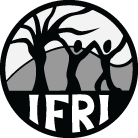January 29th, 2016: Sarah Wilson Presents at Yale ISTF Conference
Title: “Timelines and Trajectories: A researched history of events, interactions, and innovations in community rainforest stewardship”
Researcher: Sarah Wilson
Partners: Wildlife Conservation Society & Pilot Projects
Conference: Yale International Society of Tropical Foresters (ISTF) Conference
Abstract:
Learning from success stories in community-based forest management can provide inspiration, motivation, and best practices for future projects. We here present an innovative approach to synthesizing and presenting information will allow researchers, policy makers, NGOs and funding agencies to visualize how forest use, reliance, and ecology change over time in a community-based forest management system. Working with the Wildlife Conservation Society in the Peten, Guatemala, we examined changes in people’s forest use, dependence, and livelihoods over time and linked them to forest conservation outcomes (species richness and forest cover) using a historical timeline in Uaxactun, a rainforest-reliant community in Guatemala that is quickly gaining publicity as a community-based forest ‘success’ story. We gathered and synthesized data from a variety of sources including longitudinal household survey data, landsat imagery, forest biodiversity studies, oral histories and key informant interviews. The timeline visualizes how changing conditions, both external to and within the community, shape the way that they manage, benefit from, and ultimately conserve, forests. It allows people from a range of backgrounds and interests to quickly and efficiently identify correlations between the multiple factors that shape how – and why – people use and conserve their forests. Understanding forest use trajectories can improve future conservation projects, pinpoint research priorities, inform policy on forest governance and conservation, and assess community conservation ‘success’. We are working to create a web-based platform to make this timeline an interactive tool, and will soon be applying the model to other communities using different datasets.
News
IFRI Special Issue Collaboration
(17/09/2016)
FLARE Announces Keynote Speakers

